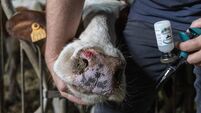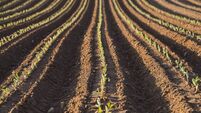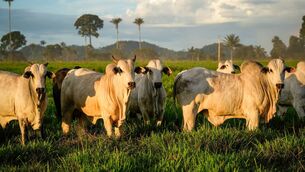Five ways dairy farmers can cut emissions

Agriculture accounts for almost a quarter of global greenhouse gas emissions.
On the other side of the coin, there are many regions where floods, drought, and increasing climatic variability can bring hunger.
In Ireland, agriculture is the single largest contributor (nearly one third) to the emissions blamed for climate change.
Dairy farmers were told they can significantly reduce emissions, at the Irish Dairying Sustainable Expansion open day at Teagasc, Moorepark, last July.
Technologies and practices are available to farmers that reduce emissions and at the same time, through improved efficiency, increase profitability.
An EU study has rated Irish dairy production as the most carbon-efficient in the EU, causing least emissions. But with the increase in dairy cow numbers, the industry is challenged by the EU’s emissions reduction targets.
Carbon efficiency is also important to promote the green image, farm profitability and for the freedom to grow the industry and increase milk output.
At the July event, five key areas where dairy farmers can reduce emissions and become more carbon efficienct were identified.
Grazing season length
Increasing the grazing season length lowers emissions in two ways.
Grazed grass in the early and late season is a higher quality, more digestible feed than grass silage, leading to improvements in animal productivity, and a reduction in the proportion of dietary energy lost as methane emissions.
The shorter housing season leads to reduced slurry methane and nitrous oxide emissions from slurry storage and spreading. Energy used spreading slurry is also reduced.
Improving EBI
Increasing genetic merit through the EBI can reduce the carbon footprint in four ways.
First, increasing milk solids yield per cow decreases emissions per unit of product.
Second, improving fertility reduces calving interval and replacement rate, thus reducing enteric CH4 emissions per unit of product.
Third, more compact calving can increase the proportion of grazed grass in the diet and reduces culling and replacement rates.
Fourth, improved health reduces the incidence of disease and deaths, leading to higher production levels and lower replacement rate.
Slurry spreading timing and methodology
Spring application of slurry reduces emissions, which are lower in cool conditions with low sunlight. The shorter storage also reduces losses of methane emissions.
The resulting reduction in ammonia losses increases the fertiliser replacement value, thereby reducing emission losses associated with chemical N fertiliser.
Low emission application technologies, such as trailing shoe, also lead to reduced ammonia losses and increase the fertiliser replacement value of slurry.
Energy efficiency
Effective pre-cooling of milk through a plate heat exchanger, the use of variable speed drive (VSD) vacuum pumps, and using energy-efficient water heating systems, can reduce energy related emissions.
Nitrogen efficiency
Improving nitrogen efficiency leads to improved utilisation of N by plants, and lowers losses to the air and water.
Improving grassland management and matching crop uptake with fertiliser application are key factors.
Urea requires less energy (and carbon dioxide) to produce than CAN, and leads to lower nitrous oxide emissions.
Research is on-going into other technologies that may have the capacity to deliver further reductions.
The carbon navigator (which is part of the ustainable dairy assurance scheme audit of farms) is a decision support tool to help farmers to reduce their carbon footprint.
The dairy carbon navigator collects a small amount of information from the dairy enterprise and uses this to assess the performance of the farm against peers. It rates performance from poor to excellent.
The carbon navigator estimates the percentage reduction in enterprise GHG emissions that can result from increasing technical efficiency in certain areas on the farm.
It also estimates the improved profitability that will result from achieving the targets.









